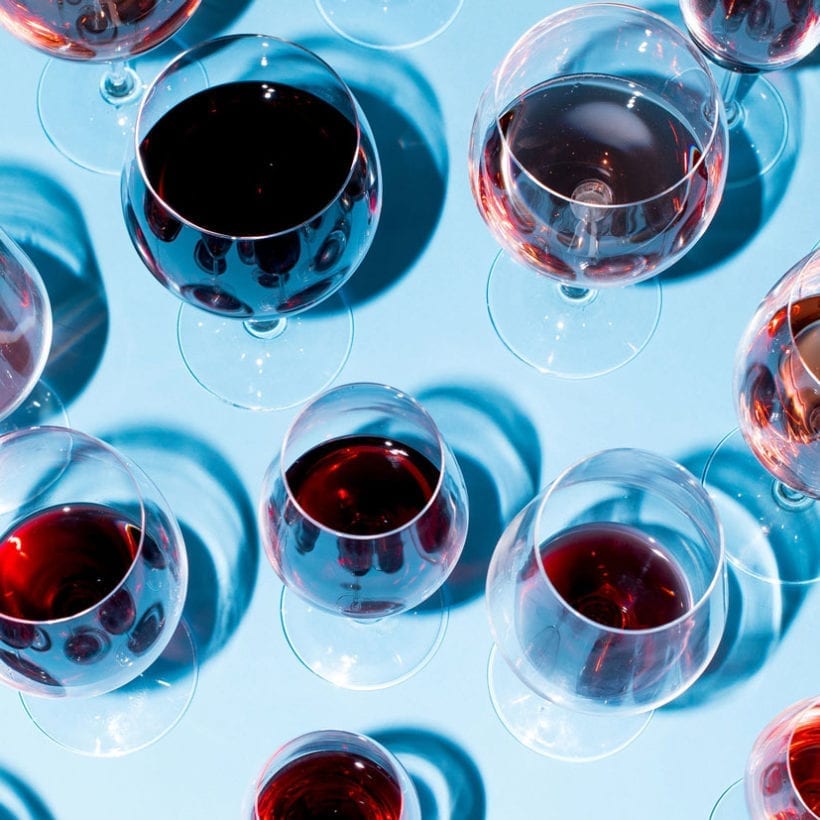If you want to live a truly sustainable lifestyle, it’s important to take a 360-degree view. While we may consider the food we eat, what about the wine bottle we crack open on a Friday night? Like any crop, grapes can be produced in more sustainable ways than others. Similarly, how the good stuff is packaged and distributed also plays a part in its planet-friendly credentials. However, even at the best of times, the wine world can seem rather inaccessible, and choosing from the endless aisles of bottles at the store can be overwhelming. Here, with the help of some wine experts, we break down everything you need to know.
The Definitions
Let’s clarify what is meant by the three main terms you see on conscious wine: organic, biodynamic, and natural.

Organic: Much like organic food and beauty, these are products made from grapes grown without artificial or chemical fertilizers and pesticides. “Certified Organic” wines must meet the United States Department of Agriculture (USDA) National Organic Program’s criteria in both farming and production. “In order to protect the vines, winemakers instead use natural methods such as insects to protect from parasites,” Laura Riches, co-founder of eco wine brand Laylo, explained.
Biodynamic: Biodynamic wine is also organic because it doesn’t use artificial or chemical fertilizers and pesticides. However, these producers go one step further as they grow the grapes in line with the principles of Biodynamic agriculture. Developed by Rudolf Steiner, this holistic farming method seeks to optimize the health and well-being of soil, animals, food, and people. “Biodynamic vineyards also incorporate mystical and astrological considerations into their decision making, ultimately thinking of the vineyards as part of an interconnected system including the moon, planets and stars,” Riches clarified.
Natural: These wines are also organic, but the production process differs from traditional organic wines. “Natural wines are made from grapes that have been handpicked and collected in a vat, then left long enough that they begin to ferment naturally. Nothing is added to set off this process, and no further additives are used to create the finished wines,” Riches clarified. Subsequently, this gives natural wine a different look (often cloudy) and its distinctive taste. Natural wines can be organic or organic and biodynamic.
Laura Riches
is co-founder of eco wine brand Laylo.
Rob Malin
is CEO of eco wine brand When in Rome.
Meet the Experts
What About Sustainability?
Choosing organic, biodynamic, or natural wine is a good first step to upping your wine’s green credentials. Farming methods that eschew the use of harsh chemicals are better for the planet’s health and its people. “Relying where possible on natural processes reduces the negative impact of the wine upon the local environment — or even enhances the local ecosystem,” Riches confirmed.
However, the sustainability puzzle is a little more complicated, and there are other things to bear in mind.

Think About the Mileage
The best way to shop more sustainably when it comes to wine? Buy local. “The most significant impact on the carbon efficiency of a wine is the weight of the packaging used to transport it, and the distance traveled,” Riches pointed out. Look at what wine is grown closest to you and try to support these businesses first and foremost. Buying from independent businesses is also often a more ethical choice.
Choose Alternative Packaging
Housing wine in glass bottles is what we are used to but it’s not necessarily the most eco-friendly choice. While glass is often deemed a better alternative to plastic as it can be recycled more easily, its weight to transport causes other sustainability issues. “The manufacturing and transportation of single-use glass bottles make up 39% of the overall wine industry’s carbon emissions,” Rob Malin, CEO of eco wine brand When in Rome, confirmed. “There is no real need for glass bottles to be used, and instead, bag-in-box, cans and paper bottles should be used instead,” he added.

Invest in Carbon-Neutral Brands
Buy from vineyards and winemakers that have made a conscious effort to reduce their carbon emissions. “Carbon labeling is the way forward in terms of helping consumers choose a planet-friendly wine,” Malin suggested. Certification bodies like Climate Neutral Certified can help you decipher which brands are making moves in the right direction.
We only recommend products we have independently researched, tested, and loved. If you purchase a product found through our links, Sunday Edit may earn an affiliate commission.







